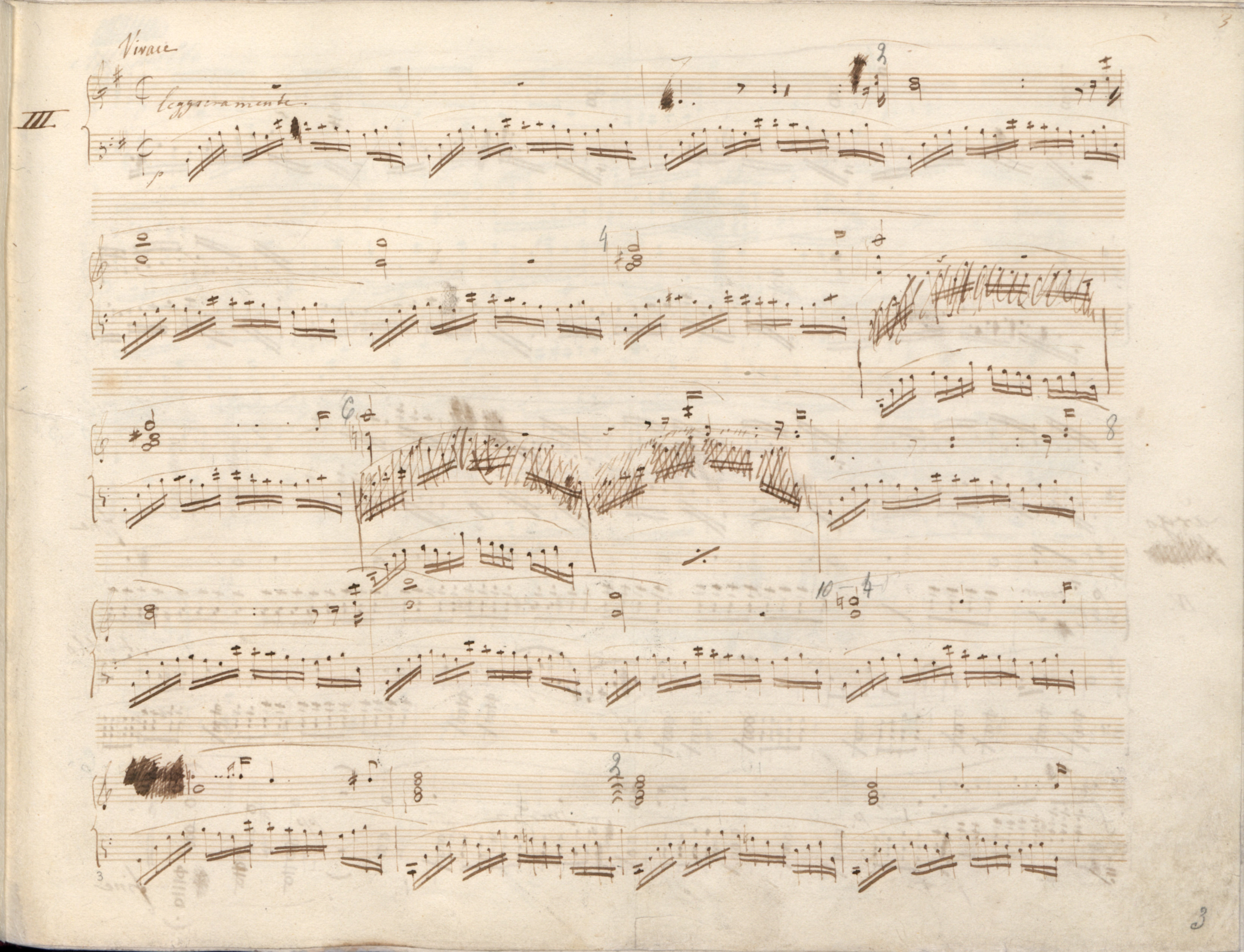



The omission of the  hairpin both in FC (→GE) and FE (→EE) is probably a result of the mark overlapping with the ending of the L.H. slur – each of the arms of the hairpin looks like an attempt to prolong/finish that slur.
hairpin both in FC (→GE) and FE (→EE) is probably a result of the mark overlapping with the ending of the L.H. slur – each of the arms of the hairpin looks like an attempt to prolong/finish that slur.
Two accents in FCI emphasize the importance of both d 2 and the C major chord, but the sense of this transition is revealed only just when they are combined, which Chopin expressed in A by uniting them with one
2 and the C major chord, but the sense of this transition is revealed only just when they are combined, which Chopin expressed in A by uniting them with one  mark. A comparison of those two marking methods allows us to better understand the sense of
mark. A comparison of those two marking methods allows us to better understand the sense of  hairpins in similar contexts (Cf. e.g. Prelude in A minor no. 2, bars 15-16). One can also see this change as an analogy to the merged slurs in b. 4-6.
hairpins in similar contexts (Cf. e.g. Prelude in A minor no. 2, bars 15-16). One can also see this change as an analogy to the merged slurs in b. 4-6.
Compare the passage in the sources »
category imprint: Differences between sources; Corrections & alterations
issues: Errors in FE, Errors of FC
notation: Articulation, Accents, Hairpins

